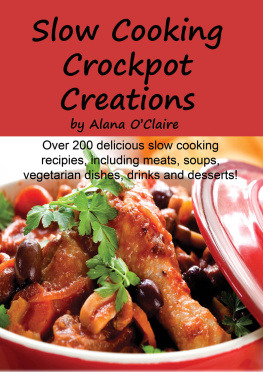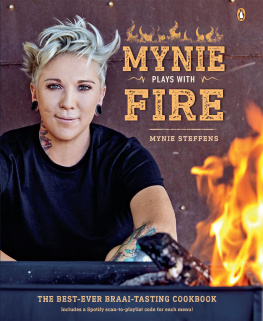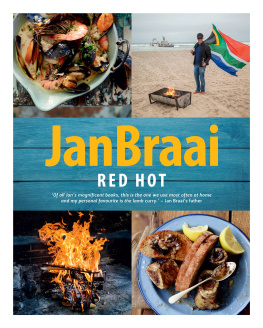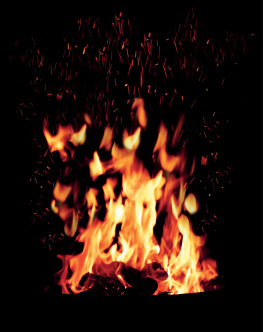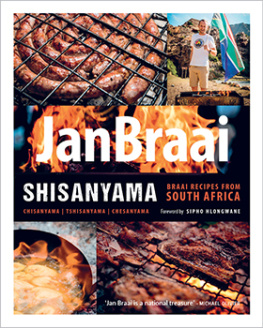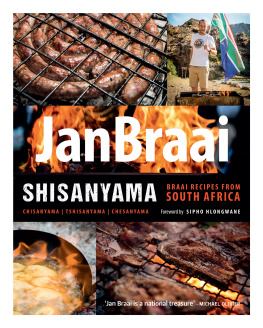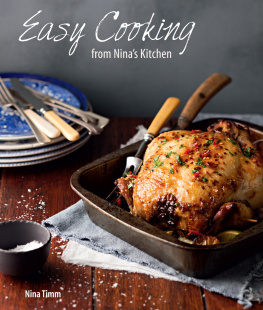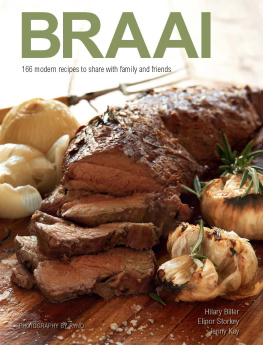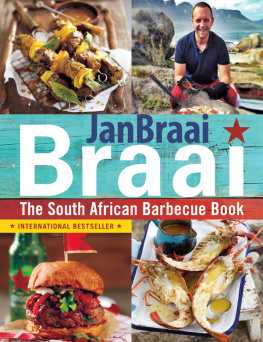
All the recipes were tested on a Weber Q300 Gas Braai
and Weber One Touch Original Kettle Braai.
For more information visit www.weber.co.za
Published in 2012 by Struik Lifestyle
(an imprint of Random House Struik (Pty) Ltd)
Company Reg. No. 1966/003153/07
Wembley Square, Solan Road, Cape Town, 8001
PO Box 1144, Cape Town, 8000, South Africa
www.randomstruik.co.za
Copyright in published edition: Random House Struik (Pty) Ltd 2012
Copyright in text: Hilary Biller 2012
Copyright in photographs: Random House Struik (Pty) Ltd 2012
All rights reserved. No part of this publication may be reproduced, stored in a retrieval system or transmitted, in any form or by any means, electronic, mechanical, photocopying, recording or otherwise, without the prior written permission of the publishers and the copyright holders.
PUBLISHER: Linda de Villiers
MANAGING EDITOR: Cecilia Barfield
EDITOR AND INDEXER: Joy Clack
DESIGN MANAGER: Beverley Dodd
DESIGNER: Helen Henn
PHOTOGRAPHER: Warren Heath
STYLIST: Lisa Clark
FOOD PREPARATION: Yvette Pascoe, Sarah Dall
PROOFREADER: Laetitia Sullivan
Reproduction: Hirt & Carter Cape (Pty) Ltd
Printing and binding: Craft Print International Pte Ltd, Singapore
ISBN 978-1-43170-009-7 (Print)
ISBN 978-1-43230-119-4 (PDF)
ISBN 978-1-43230-118-7 (e-Pub)
contents
cooks notes
As this book is a fuss-free guide, Ive chosen not to get into the intricate technical jargon of the different braais on the market. That is better left to the manuals of the specific models.
Ive tried to make cooking on the braai as straightforward and uncomplicated as possible, using accessible recipes that have been prepared on three types of braais the Weber Q300 Gas Braai, the Weber One Touch Original Kettle Braai and a built-in charcoal/wood braai. Of the three, the gas braai is the easiest to master and, if I can do it, then anyone can. The timing for all three braais is on a par, but the gas braai does have the edge due to the consistency of the flame.
Gas braai
Available in different sizes and makes, the gas braai is all about spontaneity, convenience and control over the intensity of the flame.
The gas braai comes with a lid, enabling both direct and indirect cooking. Both these methods require the lid to be closed. In fact, there are very few times that you would braai with the lid open. The benefit of the closed lid means it retains its heat like an oven, can be used exactly like an oven and any flames sparked by fatty foods are instantly doused.
For a direct method of cooking, set the flame medium to high and use this method for preparing steak, chops and kebabs. For larger joints that require a longer cooking time, the indirect method is applied using a low to medium heat.
A gas braai is easy to ignite, but it is essential to preheat it for 10 minutes on high before you start cooking. Ideal for use in all weather conditions, the gas braai is easy to clean as it has a removable grid and drip tray. The only drawback is that food prepared on the gas braai does not have the characteristic smokiness of that cooked over a wood or charcoal fire.
Gas cylinders need to be refilled once depleted and, as they are highly flammable, must be stored upright and away from direct heat.
Kettle braai
The kettle braai is both a grill and an oven, and cooking can be done with or without the removable lid. Open grilling is for food less than 6 cm thick and for the rest, the food is cooked with the lid closed. There are air vents on the lid that regulate the heat; open affords more intense heat because of the air flow and closed provides a more consistent heat.
The kettle braai offers two distinct methods of cooking the direct and indirect method.
The direct method is the traditional method of braaiing, where a mound of coals is used and the food is placed on the braai grid and cooked directly over the coals. This method of braaiing is used for food that takes 25 minutes or less to cook.
The fire must be prepared 3040 minutes beforehand. An average fire will require 4050 charcoal briquettes. Start off with half a dozen briquettes on each side, adding a firelighter to each mound. Ignite and allow to burn for 3 minutes before adding and spreading the remaining coals around the braai. Leaving the lid off, allow the coals to burn until they are glowing and covered with a layer of grey ash.
The indirect method is used for food that requires more than 25 minutes to cook. As the food will cook for longer, it will need a bigger fire requiring more coals. Use 6070 briquettes, packing them on each side. Ignite the coals and burn with the lid off until they are glowing and covered with a layer of grey ash. Extra coals can be made in a chimney starter or old metal bucket and added to the fire as necessary to maintain the heat.
For indirect cooking, the food to be cooked is placed in the centre of the kettle braai grid, with a metal or foil drip tray underneath to capture the juices. These juices can be used to make a gravy or sauce.
Smoking
Kettle braaiing is ideal for smoking using commercial wood chips or smoker dust. Hickory and oak are the popular choices. Dont be tempted to use just any wood shavings or dust as it could be covered in a finish that may be poisonous.
Wood chips require pre-soaking in water. Use 250500 ml (12 cups) chips (or as specified in the recipe) and soak for 30 minutes before spreading over the coals.
Wood or charcoal fire
The amount of wood or charcoal will depend on the food to be cooked, but ideally start out with more rather than less as it cannot be rectified later. Allow 3040 minutes for really hot coals that glow and are covered with a grey ash.
A guideline for an average braai is to pack a mound of coals in the centre of the braai, which will provide heat for cooking for up to an hour. Remember that charcoal has a longer sustained burn than wood. Ideally use the harder woods, such as camelthorn, rooikrans, mopane and leadwood, when braaiing.
Many braai aficionados prefer wood to charcoal or gas because of the distinctive flavour it adds to the braaied meat.
How hot is hot?
Hot
Test the heat when the flames have died down, the coals glow red and are covered with a layer of white-grey ash. If you can hold your hand 15 cm above the coals for only 2 seconds, then the coals are hot. This is an excellent temperature for braaiing steak.
Medium
At this temperature the ash around the coals becomes thicker and there is less of a red glow. This is ideal for food that requires slightly longer cooking, such as chops and chicken.
Low
At this stage the ash is thick and powdery, and the coals are starting to lose their shape. This temperature is great for warming garlic loaves or making things that need limited heat, such as melting ingredients for a chocolate sauce or to finish off chicken.
beef
Smoky cola T-bone steaks
The drink with the sweet caramel flavour is well known for its tenderizing qualities. This versatile marinade can also be used for chicken. Reduce the kilojoule content by using the diet variety.

GAS BRAAI
Next page

